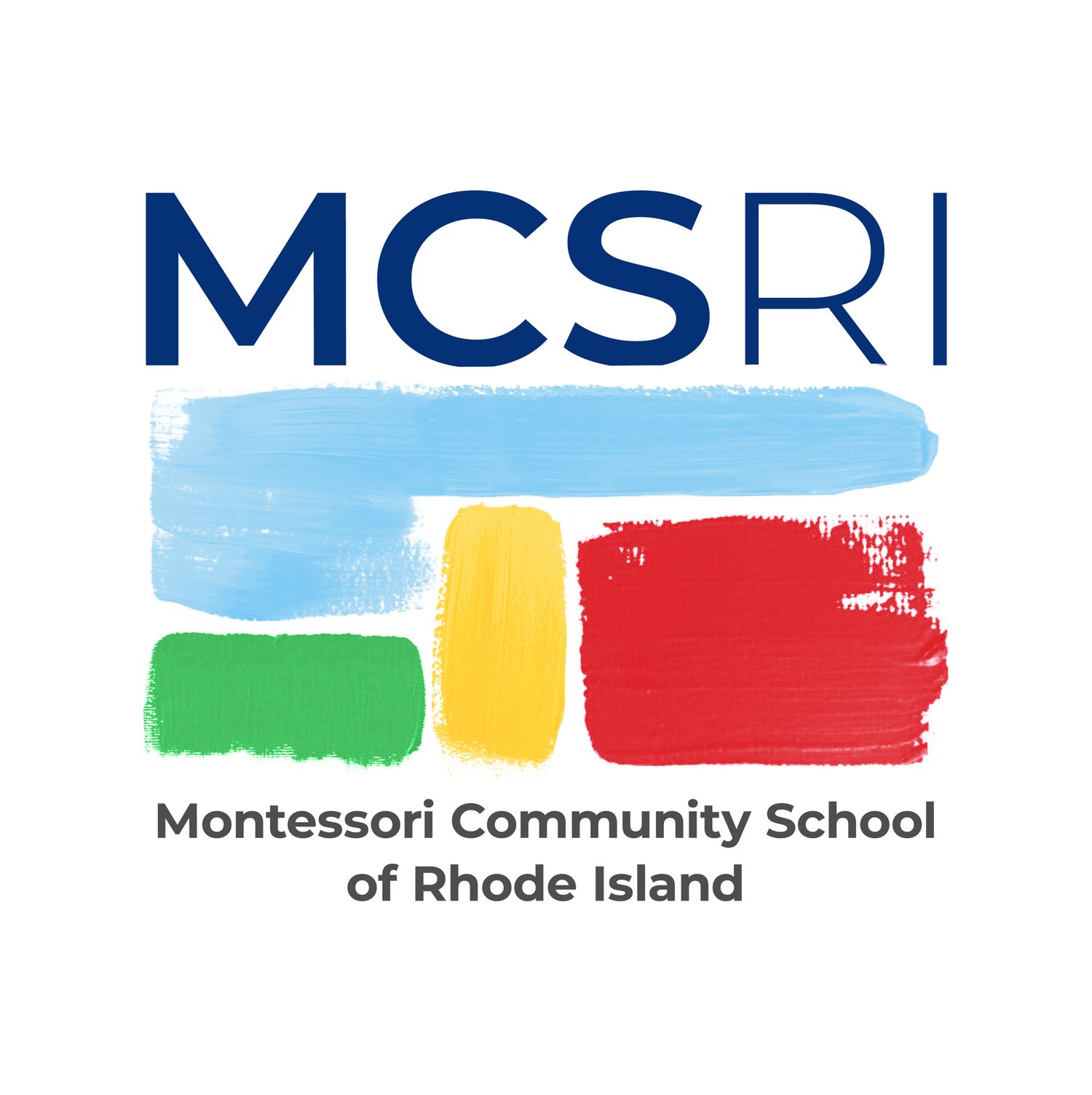Primary Curriculum (Preschool)
The curriculum for the primary, or preschool, aged child (3 - 5 years old) is designed to address the needs of the whole child and to promote cognitive, physical, social-emotional, spiritual, and psychological development. At this age, upon entering the classroom one will see children working independently and some will be collaborating. Individual work is encouraged for developmental reasons, though small group activities take place throughout the day. There are four core areas of the curriculum: Practical Life, Sensorial, Language, and Mathematics with art and cultural extensions woven throughout.
"This is our first experience with [the Montessori] educational philosophy, and we are consistently amazed with the intricacies of the approach. [Our daughter] is in an environment where her educational and developmental levels are carefully and thoughtfully considered and planned for."
-MCS RI Parent
Practical Life. The exercises of Practical Life are the foundation from which all other work in the classroom is built, and they are the first activities introduced to young children in a primary classroom. These activities help a child learn to care for him/herself, others, the environment, and how to get along in a group. These exercises meet a child’s desire to do as much as they can for themselves. In addition to supporting a child’s need for independence, these exercises build and refine gross and fine motor coordination. Each exercise includes indirect preparations for more traditional academic activities introduced as the child gets older. For instance, building left to right eye tracking prepares the child for the motions of reading and writing. Practical Life activities include common tasks a child sees as part of daily life in his/her own home: preparing food, doing dishes, washing and ironing laundry, polishing silver, or arranging flowers. Through this work a child learns to build concentration, learns logical sequences for completing tasks, and the perseverance to finish an activity from beginning to end.
Sensorial. The Sensorial materials are tools for developing the senses. Children learn to order, classify, and name impressions of the world around them. They do this using touch, taste, sight, smell, and hearing and an exploration of the physical world with specifically designed Montessori materials like the Pink Tower or the Bells. Sensorial materials help a child develop hand dexterity and strength, and introduce patterns and sets, geometry and other math concepts indirectly.
Language. Language activities are centered around three aspects: spoken language, writing, and reading. The curriculum provides enriching the language that the child has already acquired in the first two years of life through spoken activities, games, stories, songs, poems, and conversations. Lessons build toward writing and reading with verbal sound games (phonemic awareness) and learning the phonetic sound of each letter of the alphabet. Montessori materials allow a child to write before his/her hand is capable of writing on paper. At the same time, the hand is being prepared to write by building muscular memory of letter shapes and specific exercises of tracing shapes and drawing with the Metal Insets. Reading is taught through a combination of phonics and sight word recognition. Once a child is decoding words, he/she builds to phrases and sentences and activities including parts of speech and sentence diagramming.
Mathematics. Mathematical concepts are introduced using concrete materials and give a child a solid base for understanding math abstractly as he/she gets older. The mathematical quantity (concrete) is always introduced before the symbol that represents it (abstract). The math curriculum includes an experiential understanding of 1 - 10 and then linear counting to one thousand, place value and the decimal system, number writing, the four math operations (addition, subtraction, multiplication, and division), and eventually memorizing math facts so the child eventually has the tools necessary to think creatively with numbers.
Cultural Extensions. Woven throughout the curriculum is a study of geography, history, biology, botany, zoology, art, and music. This is an area of the curriculum that does not have specific Montessori materials but instead is inspired by the seasons, the cultural mix of children in the classroom, acquisition of a special object, a trip a family may take, or particular interests of the community. Any emergent themes are welcomed and become relevant and inspiring parts of the curriculum.
Nature and Art Curriculum. As part of the practical life exercises and caring for the earth, we learn to compost food scraps with our classroom compost bin and we have our own urban community garden to introduce the children to gardening. There are a variety of art activities that are available to the children. We demonstrate how to use different mediums so that the children can create as they see fit. Children also study artists and art history. In addition to the bells, which are a specific Montessori material, we introduce new songs, composers, and styles of music.
"And so we discovered that education is not something which the teacher does, but that it is a natural process which develops spontaneously in the human being. It is not acquired by listening to words, but in virtue of experiences in which the child acts on his environment. The teacher’s task is not to talk, but to prepare and arrange a series of motives for cultural activity in a special environment made for the child." ---Dr. Maria Montessori, The Absorbent Mind
A day at Montessori Community School of RI includes:
• Child-directed choice: some examples are: sewing, baking, dish washing, painting, sensory experiences, literacy and math games, food preparation activities
• Individual and group lessons
• Circle time: singing, Spanish, movement, yoga, food tasting, read alouds
• Outdoor time for development oflarge motor skills and nature explorations
• Nature and science activities
• Art exploration
• Community lunch
• Music class
• Roots and Wings-after school arts and nature based program


